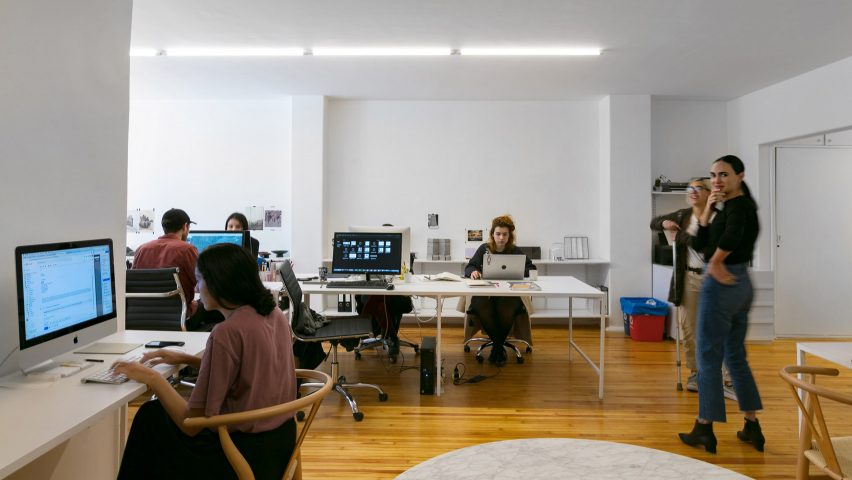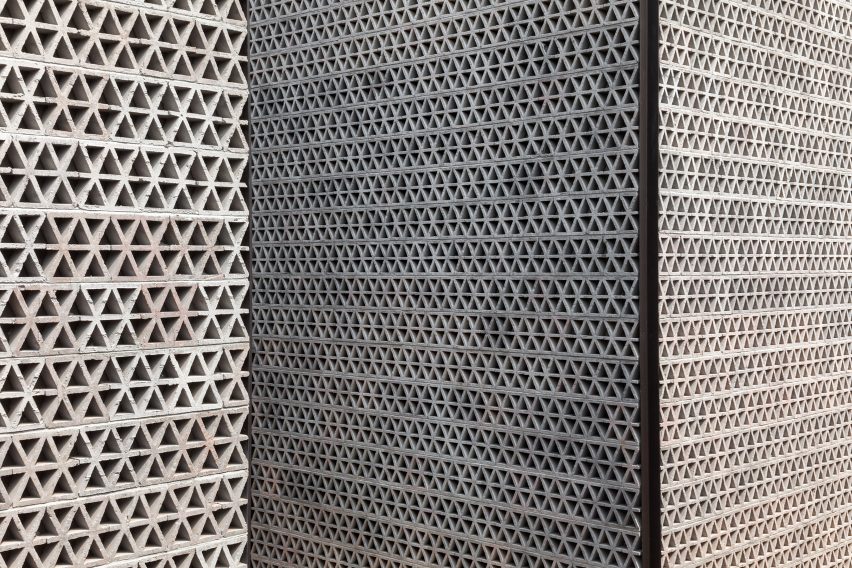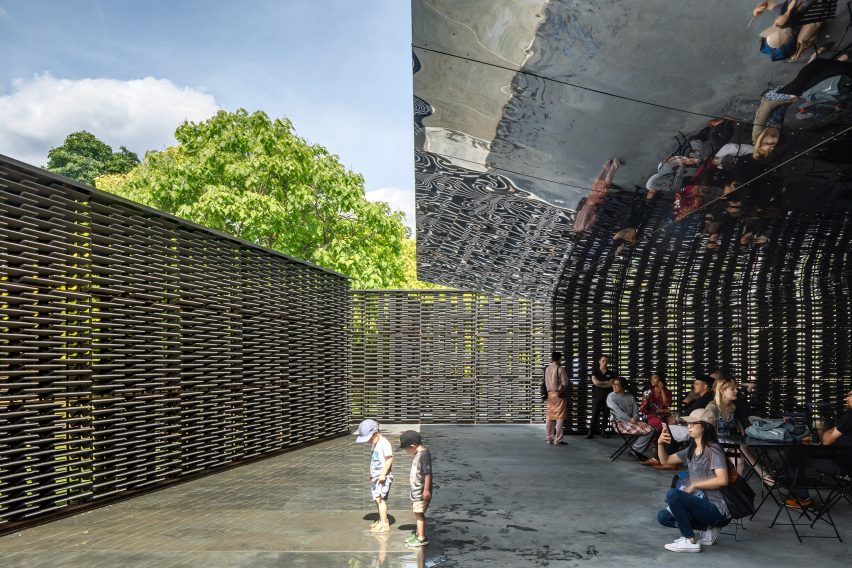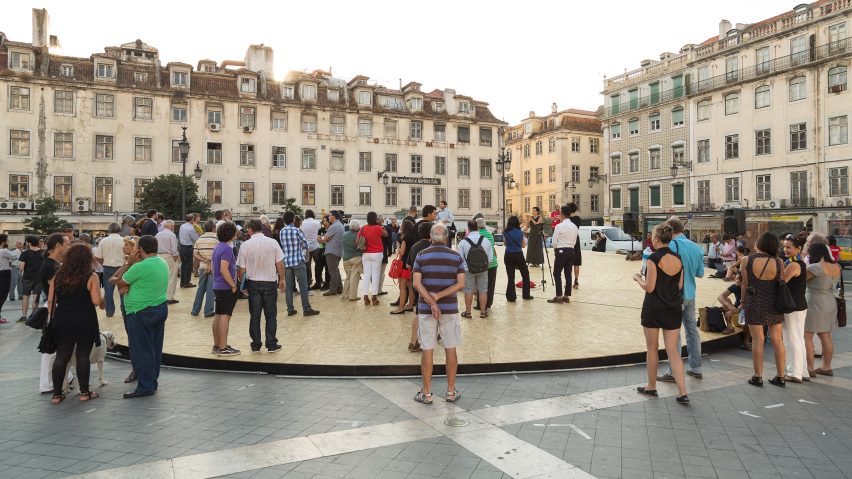"I didn't know I was going to be an architect" says Frida Escobedo
In the first of a series of short movies about Frida Escobedo, the Mexican architect describes how she fell into the profession and why she's never worked for anybody else.
Speaking exclusively to Dezeen in London the architect, who in 2018 became the youngest person to design the prestigious Serpentine Gallery Pavilion, explained that she chose her profession for unexpected reasons.
"I didn't know that I was going to be an architect from the start," she said. "I just applied for architecture school because I thought it was a safer place."
"But I loved it," she added. "The first week I was in architecture school, I completely loved it."

Born in Mexico City in 1979, Escobedo studied architecture at the Ibero-American University in her home city before taking a masters course at the Harvard Graduate School of Design in Cambridge, USA.
After that she returned home and set up her own studio, Frida Escobedo, Taller de Arquitectura, in 2006.

Her work often features simple materials and forms, such as the mass-produced cement roof tiles used at the Serpentine Gallery Pavilion, or the perforated concrete blocks that screen her La Tallera gallery complex at Cuernavaca in Mexico.
"I think my approach to architecture is that simple forms work the best and that simple materials can express very sophisticated atmospheres," Escobedo told Dezeen. "So it's not necessary to have like a very luxurious material in order to achieve a very sophisticated feeling or mood around it."
Escobedo is one of the judges for Dezeen Awards 2019.
Below is a transcript of the interview:
"Well, I grew up in Mexico City. It's a very interesting and very intense city as you may know. Everything happens and it's very active and very effervescent. But I didn't know that I was going to be an architect from the start.
"Some people have like a very clear idea of what they want to do in life very early on. I didn't. I was 17 when I had to decide what career I needed to choose. I always knew that I was going to be something in the creative field. But I wasn't sure.

"I just applied for architecture school because I thought it was a safer place, you know. Like you have to respond to practical questions and the artistic part of doing fine arts for example seemed a little bit too, like, revealing or exposing myself too much.
"So I decided to play it safe and went to architecture school, thinking that maybe I can try it and if I don't like it it will help me just to give me structure and I can pursue another career maybe in design or arts.
"But I loved it. The first week I was in architecture school, I completely loved it.

"I think my approach to architecture is that simple forms work the best and that simple materials can express very sophisticated atmospheres. So it's not necessary to have like a very luxurious material in order to achieve a very sophisticated feeling or mood around it.
"And that was something that we wanted to use in the Serpentine Pavilion but that has happened also in many other projects – the Civic Stage; the projects that we did for Stanford University – all of them are really really simple in shape and in form and in strategy, which is complex to achieve that.
"You have to go through a lot of processes and a lot of editing to come up with that final thing that expresses it all.

"I'm still based in Mexico City. I'm still working in the central area in Colonia Juarez. We just moved offices but it's just a few blocks away from where we were based. And now we're nine people at the office. So it's a small studio. I really enjoy working like very closely to my colleagues and collaborators.
"I never worked for any other office – for good and bad – I always worked as an independent architect. Sometimes with friends. I do a lot of collaborations and I think it's a great learning opportunity, you know, to collaborate with some other people. And it's also like a humbling experience, you know, like it makes you be very grounded but also become more creative.
"So as I was saying, I practiced for seven years and then I went to do my master's degree and then I came back to Mexico and I'm still working there."